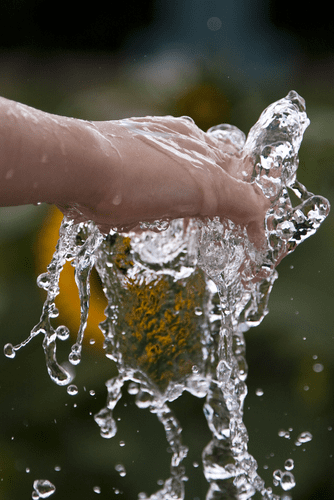Content
All of these risky behaviors and more may mean a drinking problem. Getting defensive when confronted about a drinking problem – one tell-tale sign of alcoholism is when people get defensive or angry when they are confronted about their alcohol consumption. If it isn’t a problem, there is usually little reason to get angry. The connection between alcohol consumption and your digestive system might not seem immediately clear. The side effects often only appear after the damage has happened.
Contact AspenRidge treatment for information on evidence-based programs that offer mental health and substance addiction support at all stages. While short-term effects of alcohol can lead to many potential issues, the long-term effects of alcohol abuse on the body demonstrate just how harmful alcohol can be. Some of the seemingly lesser short-term effects of alcohol abuse, like loss of coordination, can act as a catalyst. A significant fall while intoxicated can land someone in a hospital bed and may result in lasting complications. These tests should not be considered a final diagnosis, but rather a starting point to determine if help is needed. Our clinical team at The Hope House is trained to assess alcohol addiction and other substance use disorders and give you a medical diagnosis.
The Long Game of a High-Functioning Alcoholic
Alcoholics can become inattentive to personal hygiene and have a disheveled appearance when abusing substances. They may not realize this is a concern until someone points it out. Poor physical care and an unkempt appearance are serious problems if this issue affects the workplace, social circles or family life. The euphoric feeling often enables drinkers to feel more outgoing and social. Drinking is also known to elevate mood, alleviate anxiety, and increase confidence temporarily. However, these feelings quickly fade, replaced by rebound anxiety, aggression, depression, and other negative emotions.
You never want to assume that one physical effect is a definitive sign of alcohol addiction. For example, broken capillaries could also be the result of sun exposure, especially for people who have rosacea or other sensitive skin conditions. The regular abuse of alcohol will generally evolve into a full addiction when it’s treated within a short period of time. Physical dependency means that the alcoholic cannot break free from addiction even though he or she recognizes its negative consequences. After the first drink is taken, alcoholics will often have no control over how much they consume and how they act after becoming intoxicated. At the end of the day, the signs and symptoms of alcoholism may differ depending on the stage of alcoholism and the type of alcoholic.
How Mindful Drinking Helps Improve your Physical Wellness
Ablackoutis a period of time where an individual has no recollection of details of events, or entire events. This is typically caused because alcohol levels are so high, they have begun affecting the hippocampus — the portion of the brain responsible for short term memory. The presence of alcohol stops neurons from firing and thus, no new memories are formed — leaving a “black hole” in someone’s timeline.

There are factors that pop up again and again when determining who might have an issue with alcoholism. The first factor is the age at which a person has his or her first drink ; the other factors are genetics and environment. If you’re in the “at-risk” population, it doesn’t take much to become dependent on alcohol or other drugs. Many people who abuse alcohol develop a tolerance, but a functional alcoholic can drink a lot of alcohol and not appear to be intoxicated so that they look normal and fine to others. This can make the disorder difficult to identify – and make the physical manifestation of the disorder all the more critical. Mixing alcohol with caffeine can hide the depressant effects of alcohol, making you drink more than you might otherwise.
Finding Detox and Treatment
People who binge drink or drink heavily may notice more health effects sooner, but alcohol also poses some risks for people who drink in moderation. It occurs when the liver is no longer producing healthy tissue and begins to produce scar tissue, preventing the proper flow of blood. The liver also becomes unable to rid the body of toxins, effectively limit infections, and process nutrients. Alcoholism, or alcohol use disorder, affects a large segment of the population – 17 million people in 2012 – according to the National Institute on Alcohol Abuse and Alcoholism. Additionally, one in eight adults currently has an alcohol addiction. Alcohol can cause you to be dehydrated, as it slows down the process of an anti-diuretic hormone in your body.
- If you are struggling with substance abuse or mental illness, please contact PACE Recovery Center to learn more about our programs and services.
- It is often referred to as supergrass, killer weed, and angel dust, and it is sold in several forms, including capsules, colored powders, and tablets.
- Usually, a person self-identifies as an alcoholic before they seek treatment.
- Someone with an alcohol use disorder can exhibit both psychological/behavioral and physical symptoms.
- If you need a formal assessment, contact our clinical team today.
Upwards of 80% of people with AUD have a thiamine deficiency and most cases of WKS in the U.S. are related to alcohol abuse. If caught early, significant reversal can occur; however, severe cases often cause lasting, noticeable cognitive impairment. Learn how to recognize alcoholism symptoms including increased tolerance, uncontrollable cravings, and more.
Alcohol Use Disorder Statistics
Aftercare resources such as 12-step groups, sober living homes and support for family and friends promote a life rich with rewarding relationships and meaning. We provide integrated treatment for mental health disorders physical signs of alcoholism and addiction. Chronic heavy drinking can cause alcoholic hepatitis, which is the inflammation of your liver. One common sign of alcoholic hepatitis is jaundice, where the skin and whites of your eyes look yellowish.
